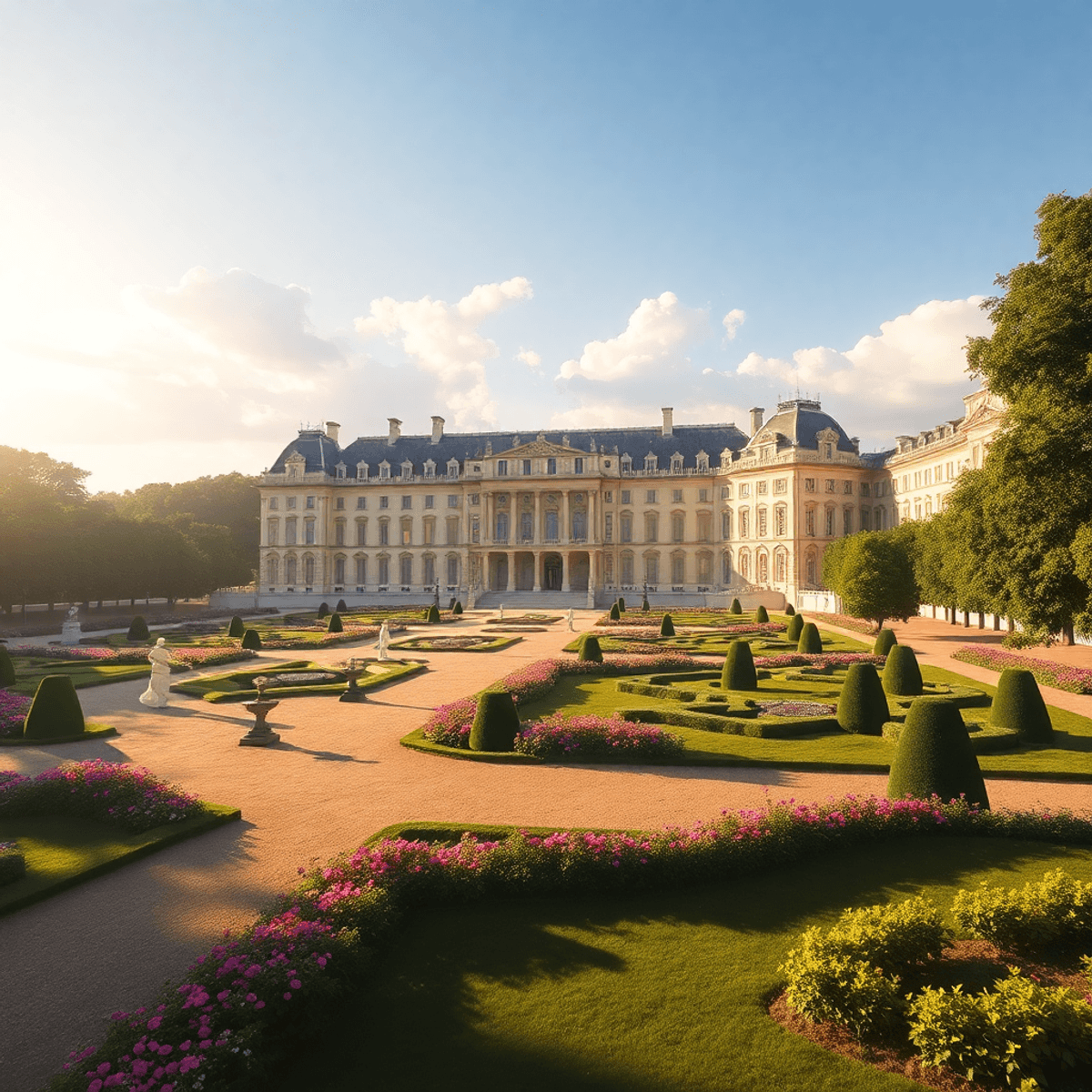
VIVE Arts has teamed up with Château de Versailles to create an immersive VR experience called “VERSAILLES: LOST GARDENS OF THE SUN KING.” This innovative project aims to bring back the lost history of the Palace, allowing visitors to explore the lesser-known aspects of French royal heritage.
This collaboration highlights several key elements:
The immersive VR experience will open on March 25, 2025, providing a transformative journey through time at one of France’s most iconic landmarks.
The Château de Versailles is a powerful symbol of French monarchy and artistry. It holds great historical significance as it represents the height of royal power during the reign of Louis XIV, also known as the Sun King. This lavish palace served not only as a home but also as a hub for political and cultural activities in France.
Several important events and individuals have played a role in shaping the identity of this magnificent structure:
These stories add to the Palace’s rich history, showcasing its significance in both French history and European art movements. The cultural heritage contained within these walls has had a profound impact on modern art forms, inspiring numerous artists and creators.
Visitors can delve into the history of the Palace by exploring its stunning architecture, gardens, and art collections. Every nook and cranny tells a tale that connects the past with the present, inviting a deeper appreciation for France’s artistic legacy.
VIVE Arts has become a major player in the world of cultural exhibitions. They are dedicated to using innovative technologies like virtual reality (VR) to promote appreciation for global heritage. Their mission is to make art and culture more accessible and engaging by reinventing traditional exhibition formats.
Some of the significant projects undertaken by VIVE Arts include:
One of their most important collaborations is with the Château de Versailles, where VIVE Arts is working together to create the VR experience “VERSAILLES: LOST GARDENS OF THE SUN KING.” This project is a perfect example of how technology can connect us with history, allowing visitors to discover hidden areas within the gardens and engage with French royal history.
Through these initiatives, VIVE Arts shows its dedication to combining advanced technology with cultural storytelling. By creating lifelike replicas of historical places and inviting people to explore them through VR, they are able to establish a one-of-a-kind bond between individuals and artistic expressions.
An immersive experience in virtual reality (VR) transports users into a fully realized environment, engaging multiple senses to create an authentic exploration. Key elements include:
VIVE Arts’ partnership with Château de Versailles exemplifies how VR technology enhances storytelling in art. This collaboration allows visitors to step into the gardens of Versailles as they appeared in 1682. Participants aren’t just observers; they become active players in historical narratives.
By utilizing VR technology, audiences can:
The potential of immersive experiences is evident in projects like “VERSAILLES: LOST GARDENS OF THE SUN KING,” which aims to revive lost history through innovative storytelling techniques. Each interaction provides viewers with deeper insights into the richness of French heritage while bridging the gap between past and present.
The term lost history refers to parts of the Château de Versailles that people have forgotten about. This immersive VR experience aims to bring these stories back to light, helping us better understand the Palace’s significance.
By engaging with these stories through VR, participants step into a world where they can interact with history in unprecedented ways. They will not merely observe; they will actively participate in significant moments that shaped French culture.
This innovative approach transforms how you can discover cultural exhibitions using VR technology. It bridges the gap between past and present, offering insights that enrich your appreciation for one of France’s most iconic landmarks. The collaboration between VIVE Arts and Château de Versailles exemplifies how technology can illuminate historical treasures that were once lost to time.
The development of the VR experience at Château de Versailles involves various technical innovations that address significant challenges. Key issues include:
Capturing the detailed aesthetics of historical structures requires advanced 3D modeling techniques. The architectural beauty of Versailles, characterized by its elaborate gardens and opulent buildings, demands meticulous attention to detail.
Ensuring a smooth user experience is crucial for immersion. Developers must balance high-quality graphics with performance to avoid lag during interactions, which can detract from the overall experience.
These challenges reflect broader trends in how museums are embracing VR technology in art. Institutions worldwide implement virtual reality as a dynamic educational tool:
This innovative approach not only enhances visitor engagement but also serves as a model for future cultural projects, pushing the boundaries of how history is experienced and understood.
Visitors embarking on their journey through time at Château de Versailles can anticipate an engaging and informative experience. Key features include:
Accessibility remains a priority in this immersive experience. Features designed for inclusivity encompass:
This commitment to accessibility allows a diverse audience to find out about virtual reality in museums while enjoying VIVE Arts’ collaboration with Château de Versailles. The innovative approach not only enhances visitor engagement but also ensures that cultural heritage is experienced by everyone.
The partnership between VIVE Arts and Château de Versailles represents a crucial moment in the evolution of cultural experiences. Such collaborations can:
Celina Yeh, Executive Director of VIVE Arts, emphasizes this potential. The initiative not only highlights the importance of preserving history but also reflects a commitment to advancing how we experience culture today. As institutions like Château de Versailles embrace these immersive technologies, they pave the way for ambitious projects that redefine our connection to the past. This collaboration signifies a transformative shift in how cultural narratives are shared and experienced.

